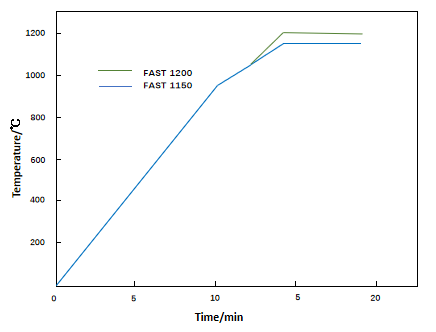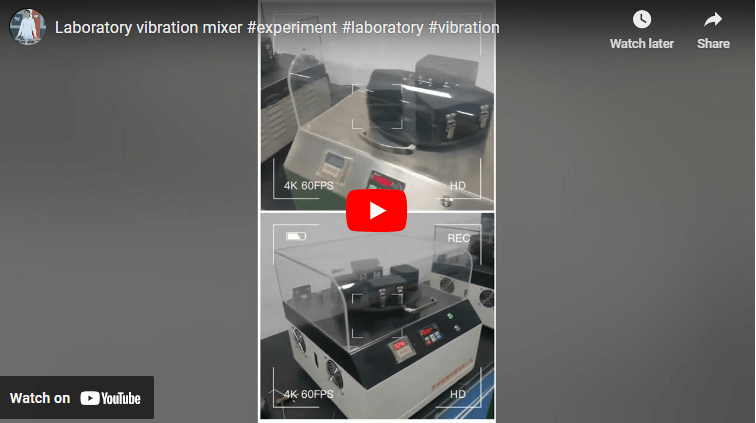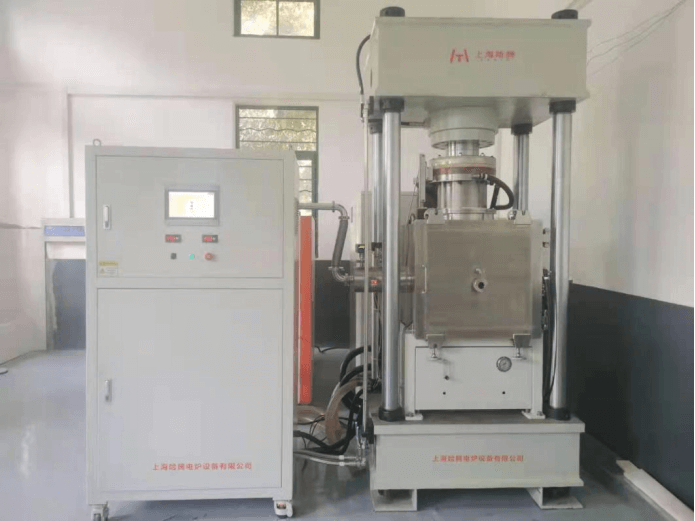Nano cemented carbide has become the focus of research in the field of cemented carbide due to its excellent performance. The key to preparing nano cemented carbide lies in the preparation of nano powder and the inhibition of grain growth during sintering. The invention and application of methods such as spray conversion have made the preparation technology of nano WC powder relatively mature. However, due to the large surface energy of nano powder, WC grains are easy to grow during sintering. Therefore, FAST sintering cemented carbide can effectively inhibit grain growth is necessary.
Field assisted sintering technology FAST Sintering is a novel sintering method that has been developed recently. Its basic principle is to add an auxiliary electric field based on traditional pressure sintering. It charges the particle gap to generate highly active plasma. Thereby activating the sample surface and accelerating the diffusion and migration of materials. At the same time, a large current directly acts on the sample to generate a large amount of Joule heat inside the sample. The sample completes the fast sintering process under the combined action of external mold heating and internal Joule heat.
This paper uses field assisted sintering technology to inhibit the growth of WC grains. After sintering, we observed the microstructure of bulk cemented carbide obtained by FAST sintering and vacuum sintering and compared the main processes and mechanical properties of the two.
Testing method
The original powder WC-12%Co powder used in this test has an average particle size of 160nm and a total carbon content of 5.74w%, of which free carbon accounts for 0.15wt%. We carry out the FAST sintering cemented carbide on Field assisted sintering technology furnace CNE-HPF-828. The sintering temperatures are 1150℃ and 1200℃, respectively, and the holding time is 5min. The maximum axial pressure of sintering is 30MPa, and the vacuum degree is 6Pa. Carry out the vacuum sintering cemented carbide in a vacuum sintering furnace, and the sintering temperature is 1450℃.
FAST sintering cemented carbide test conditions and parameters
In this test, we select two groups of FAST sintering with different parameters, and one group of vacuum sintering, as shown in Table 1. Vacuum sintering has two insulation stages before reaching the sintering temperature, with insulation times of 180min and 30min respectively. After reaching the sintering temperature, the insulation time is 45 minutes. We can find the the heating process curves of FAST sintering and vacuum sintering in Figure 1 and Figure 2 respectively.
| Temperature/ ℃ | Pressure/ MPa | Holding Time/ min | |
| FAST 1200 | 1200 | 30 | 5 |
| FAST 1150 | 1150 | 30 | 5 |
| VAS 1450 | 1450 | / | 45 |


Performance Test Results and Analysis
We can find the test results of the physical properties of the bulk cemented carbide after sintering in Table 2. The FAST sintering can obtain nearly fully dense cemented carbide. The sintering time consumed is only 1/26 of that of vacuum sintering. At the same time, the FAST sintering steps are simpler, without the process of powder pre-pressing, adding binders, and vacuum drying. During the sintering process, there is only a heat preservation stage at the end of sintering. Vacuum sintering has a heat preservation time of up to 180 minutes and 30 minutes respectively before reaching the sintering end temperature. There is also a 45-minute heat preservation time after reaching the sintering temperature.
Vacuum sintering cemented carbide mechanism
The heating method of vacuum sintering is external heating of the sample, and the form of heat transfer is heat conduction. Transfer the heat from the outside of the sample to the core through the mold, and its thermal efficiency is relatively low. Therefore, if you want to achieve a very high density, a long sintering time is required. Allow enough time for the heat to be transferred to the core to complete the densification process. At the same time, traditional sintering relies on the existence of the liquid phase and completes sintering under the action of the “dissolution and precipitation” mechanism. Therefore, the traditional sintering temperature must reach above the eutectic temperature of the sintered component. The eutectic temperature of WC-12%Co is around 1340℃, so the sintering temperature of vacuum sintering reaches 1450℃.
FAST sintering cemented carbide mechanism
The sintering temperature required by FAST sintering is also more than 250℃ lower than that of vacuum sintering. This is mainly because the FAST sintering mechanism is different from traditional vacuum sintering. In addition to the mold heating from the outside to the inside, the large current directly passes through the sample to generate a large amount of Joule heat. More importantly, the discharge and activation of plasma greatly improve thermal efficiency.
In the early stage, due to the gaps between the particles, plasma is generated under the action of the electric field to discharge at the gaps. The local temperature of the gap can be as high as thousands of degrees. And the energy generated spreads rapidly to the surroundings. Therefore, it can effectively destroy the oxide film on the surface of the particles and greatly activate the surface of the particles. And accelerate the process of various diffusions. Under the action of evaporation and melting, the sintering neck is promoted at the contact part of the particles, which accelerates the densification process.
The heat energy of the sample core comes from the heat transfer of the mold and can also receive the thermal radiation of Joule heat generated by other parts of the sample. The most important thing is that it also generates Joule heat. Therefore, FAST sintering can avoid the core defects caused by traditional sintering methods and greatly shorten the sintering time.
Testing result analysis
Except that the density is slightly lower than that of vacuum sintering, FAST sintering has obvious advantages in other major mechanical properties. The improvement of mechanical properties is also due to the special sintering mechanism and densification mechanism of field assisted sintering technology.
Grain size comparison after sintering
The WC grains obtained by FAST sintering are much smaller than those obtained by vacuum sintering. The WC-12Co powder with an average particle size of 160nm only increased by 70nm after FAST sintering at 1150℃. And the density also reached 99.3%, which is close to complete density. After vacuum sintering, the WC grain size increased by 370nm. The distribution of the Co phase after FAST sintering is relatively uniform, and the size distribution of WC grains is also relatively uniform. This provides a basis for its excellent mechanical properties.
Test results of FAST Sintering vs. Vacuum Sintering
FAST sintering cemented carbide has the following advantages
It can complete the sintering and densification process within 20 minutes, while vacuum sintering requires 520 minutes. The sintering temperature required by FAST sintering is lower than the eutectic temperature, which is more than 250°C lower than vacuum sintering.
It can obtain a nearly fully dense cemented carbide, with a hardness increase of more than 1.5% and a bending strength increase of more than 12.6%.
The growth of WC grains can be effectively inhibited, and the organization is uniform, which provides a basis for good mechanical properties.









